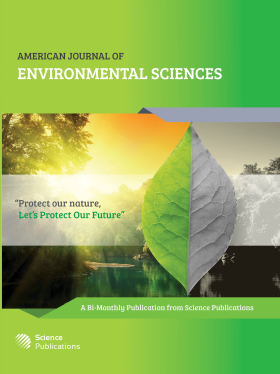Water Quality Assessment of A Constructed Wetland Treating Landfill Leachate and Industrial Park Runoff
Abstract
A surface flow constructed wetland was used for the treatment of landfill leachate and industrial park runoff. The wetland consisted of seven cells and was designed as a kidney shape to facilitate high retention time. The water quality was assessed for iron, manganese, phosphorus (orthophosphate), pH, dissolved oxygen (DO), nitrogen (ammonia, nitrate, nitrite and TKN), chemical oxygen demand (COD), total suspended solids (TSS) and total dissolved solids (TDS). The water quality parameters were measured at inlet, cell 1 (unvegetated area), cell 2, cell 3 and outlet to determine progress in treatment efficiency as water flow through the wetland. The reductions in iron, manganese, ammonia and TKN were 24.2 %, 6.7 %, 37 % and 5.9 %, respectively. The concentrations of nitrite, nitrate and DO were within the Canadian guidelines for the protection of aquatic animals. Increases in COD, TSS and TDS concentrations of 11.8 %, 5.2 % and 7.5 %, were observed at outlet mainly due to immature vegetation and underdeveloped biodiversity.
DOI: https://doi.org/10.3844/ajessp.2008.111.120

- 5,535 Views
- 5,500 Downloads
- 7 Citations
Download
Keywords
- Constructed wetland
- Landfill leachate
- Water quality
- Iron
- Manganese
